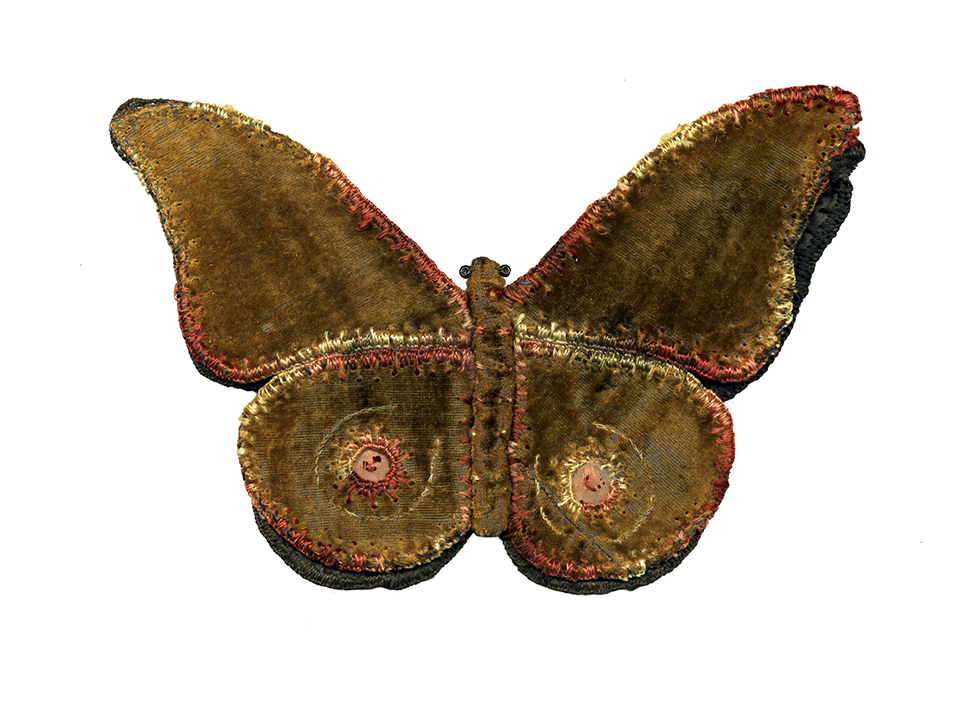
Pen wipers were an important part of any writing kit for those who wrote with ink during the 19th century. Used to clean ink from the nib of a pen, whether quills, or dip or fountain pens with metal nibs, pen wipers helped keep pen tips clean and free from clogs created by a buildup of dried ink, thereby ensuring smooth, error-free writing.
Pen wipers came in a wide array of shapes and sizes, from simple cloth disks to more elaborate versions of wood or metal, sometimes fashioned into figural shapes featuring bristles for cleaning pen tips. Dark colors, especially black, were commonly used as they hid the ink marks better. Common pen wiper designs were based on tree leaves, embroidered circles, and butterflies, like the one pictured here which features three layers of black felt sandwiched between gold and black velvet wings and tiny beads for eyes. Butterfly shapes were an especially popular form, and patterns for making them were widely published in magazines such as Godey’s Lady’s Book. Nathaniel Hawthorne’s wife Sophia Peabody Hawthorne is recorded as having made one for her husband (and friend of Henry W. Longfellow) to keep him from using his writing robe to clean his pen nib.
Many pen wipers were homemade, and they were often given as gifts by family members. For his fifty-fourth birthday in 1861, Henry Longfellow recorded the gifts received from his daughters “Alice gives me a pearl paper-knife, Edie a pin-cushion, and Annie a pen-wipe.” Annie Longfellow perhaps specialized in giving pen wipers as gifts, writing at age six in a letter to one of her aunts that for Christmas in 1863 she “made Uncle Sam a pen wiper.” Perhaps this pen wiper, found by the National Park Service in Longfellow’s study, was one of Annie’s creations.
